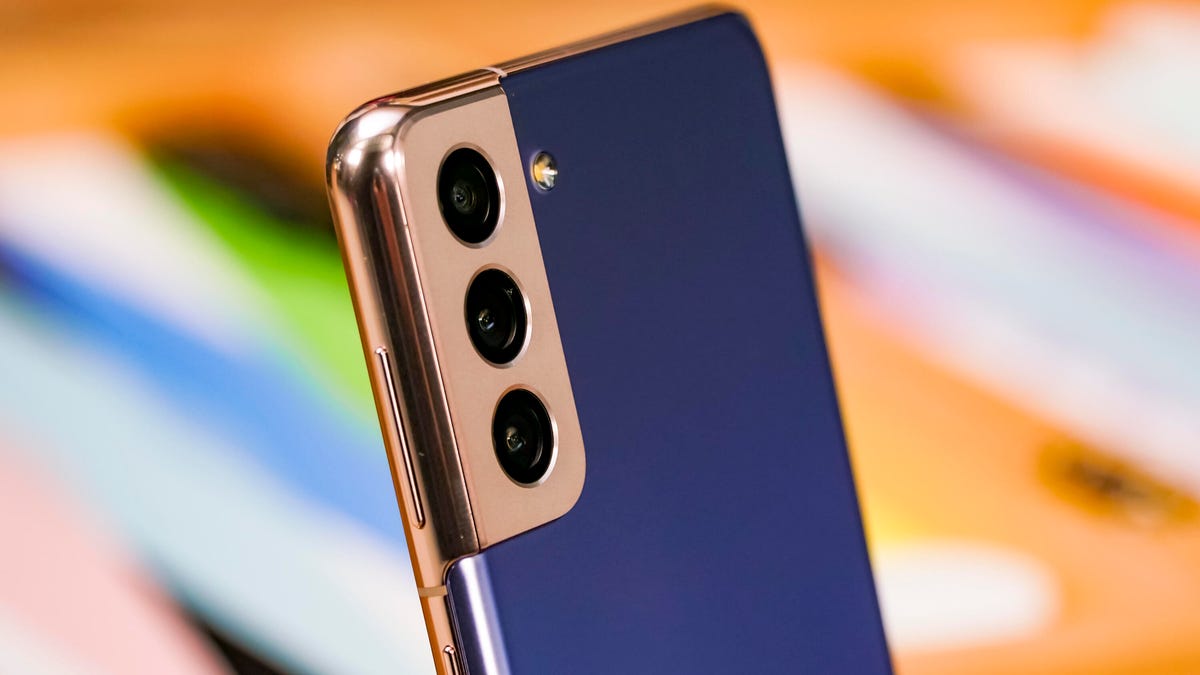iPhone 12 Pro vs. S21 Plus: Key specs compared between Apple and Samsung's phones
If you're looking for a premium phone, these two are almost definitely on your list. Here's how they stack up.

At $1,000 a pop, the iPhone 12 Pro and the Galaxy S21 Plus pack some of the best hardware and software in a phone that money can buy. So, which device is better suited to your needs? Here are some of the key differences to keep in mind before you pull the trigger.
Does the iPhone 12 Pro have a faster processor than the S21 Plus?
In the United States, the S21 Plus comes equipped with Qualcomm's latest Snapdragon 888, which is the go-to chipset many Android manufacturers use to power their latest flagships. Apple makes its own chips and has crammed its latest A14 Bionic processor into all four iPhone 12 models, including the 12 Pro. Although each chipset is at the top of its game, Apple's A14 has an edge based on reported third-party benchmark tests. In day-to-day use, however, most would be hard-pressed to spot the difference.
Which phone takes better pictures?
It's tough to make an outright call without first putting the phones through a shootout (as we have done with the higher-end and base-level models). But even if we did put the cameras through the paces, calling out a winner isn't so straightforward as each phone has its own unique strengths.
In general, the pro models of the S21 line have better zoom chops than the higher-end iPhone 12s. For instance, the S21 Pro has a dedicated 64-megapixel telephoto camera that can zoom to a 30x magnification, while the iPhone 12 Pro, which has a fantastic telephoto camera, maxes out at 12x.
The iPhone 12 Pro takes superb photographs day or night. Apple has added a new photo format called ProRaw, which means the camera can take shots that give traditional DSLRs a run for their money. CNET's Stephen Shankland is a big fan of Apple's ProRaw technology, saying it lets him achieve a look that's more "pleasing and natural" than he can get with the standard JPEG or HEIC photos most camera phones produce.
Does the iPhone 12 Pro display beat the S21 Plus?
Samsung reduced screen resolution by half on the S21 and S21 Plus, as it tried to save on costs given the lowered starting price. The iPhone 12 Pro has the higher-res display but the Galaxy S21 Plus touts a faster refresh rate of 120Hz, which makes for a silky smooth experience when scrolling through social media feeds and navigating between apps. Before launch it was speculated that the iPhone 12 lineup would have a 120Hz screen refresh rate -- double that of the iPhone 11. But that didn't turn out to be the case: The iPhone 12 variants all have a 60Hz screen refresh rate, matching the iPhone 11 display.
Any other differences I should know about?
Neither the S21 Plus or the iPhone 12 Pro have bundled chargers anymore, but Apple's magnetically enabled system lets you charge your iPhone 12 Pro with a so-called MagSafe charger (sold separately). You can also attach all kinds of accessories to the back of the device, opening up new possibilities and practical applications. CNET's Roger Cheng called MagSafe the iPhone 12 family's sleeper feature that could outshine 5G. For any other differences, take a look at our specs chart below.
Galaxy S21 Plus vs. iPhone 12 Pro
| Galaxy S21 Plus | iPhone 12 Pro | |
|---|---|---|
| Display size, resolution | 6.7-inch Flat FHD+ Dynamic AMOLED 2x, 2,400x1,080 pixels | 6.1-inch OLED; 2,532x1,170 pixels |
| Pixel density | 394 ppi | 460ppi |
| Dimensions (Inches) | 2.97x6.35x0.3 inches | 5.78x2.82x0.29 inches |
| Dimensions (Millimeters) | 75.6x161.5x7.8 mm | 146.7x71.5x7.4 mm |
| Weight (Ounces, Grams) | 7.12 oz; 202g | 6.66 oz; 189g |
| Mobile software | Android 11 | iOS 14 |
| Camera | 64MP (telephoto), 12MP (wide-angle), 12MP (ultrawide) | 12-megapixel (wide-angle), 12-megapixel (ultra-wide), 12-megapixel (telephoto) |
| Front-facing camera | 10-megapixel | 12-megapixel |
| Video capture | 8K | 4K |
| Processor | Snapdragon 888 64-bit octa-core processor 2.8GHz (max 2.4GHz+1.8GHz) | Apple A14 Bionic |
| Storage | 128GB/256GB | 128GB/256GB/512GB |
| RAM | 8GB | Undisclosed |
| Expandable storage | None | None |
| Battery | 4,800 mAh | Undisclosed; Apple lists 17 hours of video playback |
| Fingerprint sensor | In-screen | No (Face ID) |
| Headphone jack | USB-C | Lightning |
| Special features | IP68 rating, 5G-enabled, 30x Space Zoom, 10W wireless charging | Lidar scanner; 5G enabled; MagSafe; water resistant (IP68); wireless charging; dual-SIM capabilities (nano-SIM and e-SIM) |
| Price off-contract (USD) | $1,000 (128GB) | $999 (128GB), $1,099 (256GB), $1,299 (512GB) |
| Price (GBP) | £949 | £999 (128GB), £1,099 (256GB), £1,299 (512GB) |
| Price (AUD) | AU$1,549 | AU$1,699 (128GB), AU$1,869 (256GB), AU$2,219 (512GB) |
**all prices at launch

